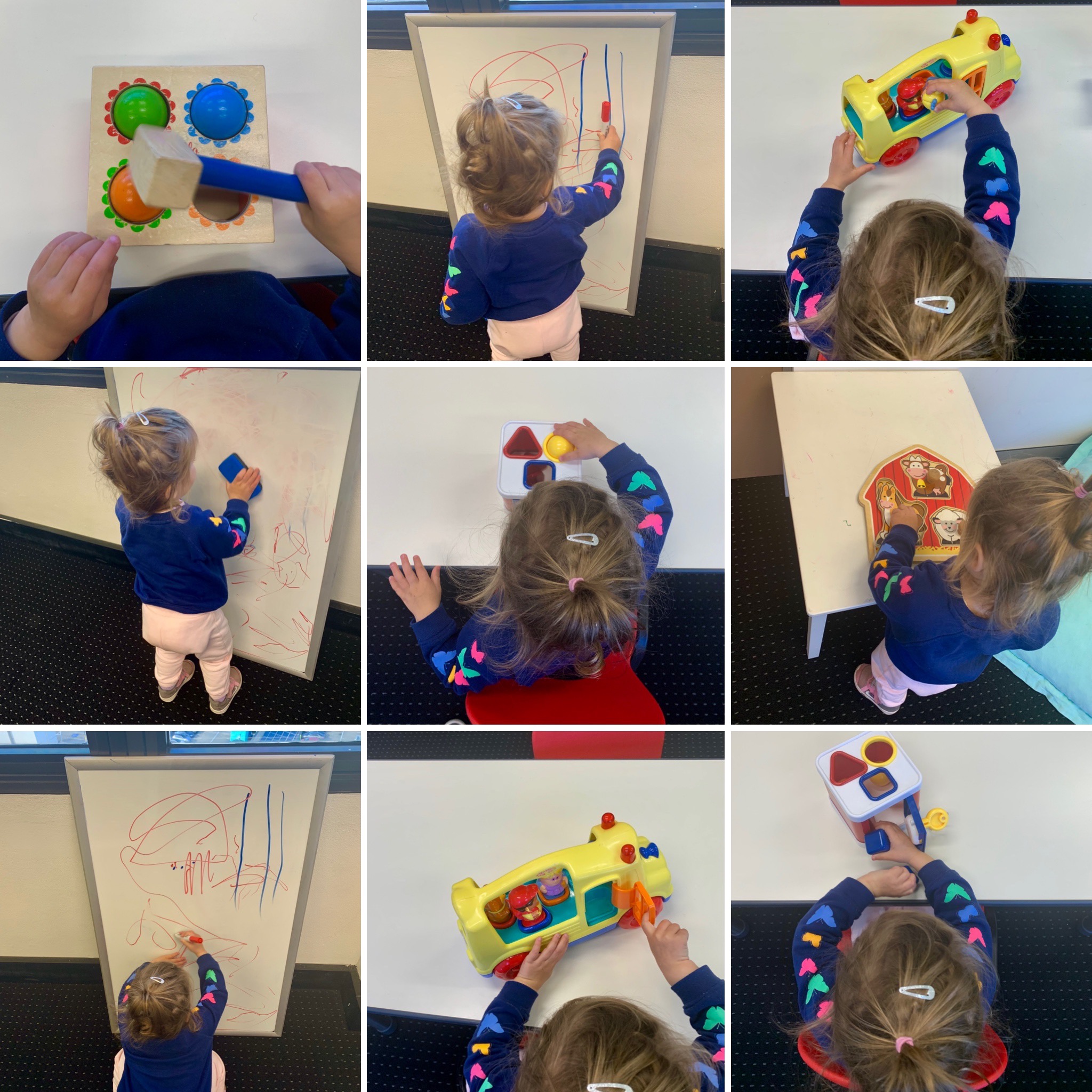
What an Early Start Denver Model (ESDM) Session Looks Like
The Early Start Denver Model (ESDM) is a play-based therapy designed for young children with autism. It blends behavioural and developmental principles to help children reach key milestones in communication, social interaction, and cognitive development. At OneOnOne Children’s Therapy, we plan each ESDM session to maximise a child’s progress in a fun, engaging environment. Here’s a breakdown of what an ESDM session looks like.
Getting Ready for the Session
Before the child arrives, the therapist reviews the goals and notes from the last session. This helps them decide which toys and activities will work best. They set up the room with toys and activities that are interesting and inviting. The aim is to grab the child’s attention as soon as they walk in. Controlled materials are key. Toys that aren’t being used stay out of sight, preventing distractions.
Starting with a Social Game
The session begins with the child choosing the first activity. This is usually a social game. Social games are important because they help build a strong connection between the therapist and the child. They also help set the tone for the session by creating a positive and engaging start. The ESDM is an NDBI and these are key principles in this therapy approach.
The first activity is all about engagement. It focuses on getting the child comfortable and ready to learn. The therapist uses this time to help the child settle into the session without feeling overwhelmed. Movement may be included to get the child’s body ready to learn. The goal is to create a calm, focused atmosphere where the child can thrive. This is the first part of what an ESDM session looks like.
Tabletop Activities
Once the first activity ends, the therapist typically moves to a tabletop activity. Tabletop activities help capture the child’s attention. When the child and therapist sit face-to-face, it’s easier to build joint attention, a key skill for learning.
The child picks the activity from options the therapist has set up. For example, the child might choose a puzzle. The therapist then spends at least five minutes on that activity, working to integrate teaching moments. The goal is to teach every 30 seconds. As the child engages with the puzzle, the therapist might work on teaching concepts like colours, shapes, or problem-solving. This keeps the learning experience natural and fun. This is the second part of what an ESDM session looks like.
Balancing Movement and Tabletop Activities
The therapist balances tabletop activities with movement-based ones throughout the session. If the child is focused and engaged at the table, the next activity might be another tabletop task. However, if the child needs more movement, the therapist may switch to a physical activity.
Movement-based activities could include bouncing on a gym ball or playing with bubbles. These activities still address therapy goals but offer the child a chance to reset and refocus. The therapist continues teaching during these activities, maintaining the teaching rate of one new concept every 30 seconds.
Gym Time
In the middle of the session, the therapist often takes the child to the gym. The gym is a great place to work on gross motor skills and social skills that involve active play. Gym activities might include climbing, balancing, or riding a bike. These activities help the child build important physical skills while keeping them engaged.
After gym time, the therapist and child return to the therapy room for more structured activities. Let’s look at what the rest of the ESDM session looks like.
Returning to Tabletop Activities
Following gym time, the child usually returns to a tabletop activity. Again, the child gets to choose from the toys set up in the room. They might choose to build with Lego or stack blocks. Depending on the child’s skill level, this activity might last around five minutes.
The therapist’s job is to keep the child motivated and interested. They might introduce new elements, called “elaborations,” to keep the activity exciting. For example, if the child is playing with Duplo aeroplanes, the therapist might bring out a toy screwdriver to “repair” the plane. These small additions help keep the activity fresh and extend the child’s attention.
Finishing the Session
As the session winds down, the therapist and child work together to pack up the toys. This provides another chance to target specific goals, such as following instructions or taking turns. Keeping the room organised also helps maintain a structured environment.
The session ends with a goodbye song. Singing the song signals the end of the session and reinforces social communication skills.
Parent Involvement
The last 10 minutes of the session are reserved for parents. They come into the room to discuss their child’s progress with the therapist. The therapist goes over the goals the child has been working on and provides guidance on how parents can support these goals at home. Parent involvement is crucial for reinforcing what the child learns in therapy. That gives you the idea of what an ESDM session looks like.
Conclusion
An ESDM session is a dynamic, carefully planned experience designed to engage children while supporting their individual needs. Every part of the session, from the social games to the gym activities, helps build skills in a way that feels natural and fun. Our Certified ESDM Therapists create a positive, supportive environment where children with autism can thrive.
Contact us at OneOnOne Children’s Therapy if you are keen to learn more about the Early Start Denver Model. We have clinics in Bondi Junction and Mascot.

Internet Chicks Awesome! Its genuinely remarkable post, I have got much clear idea regarding from this post . Internet Chicks